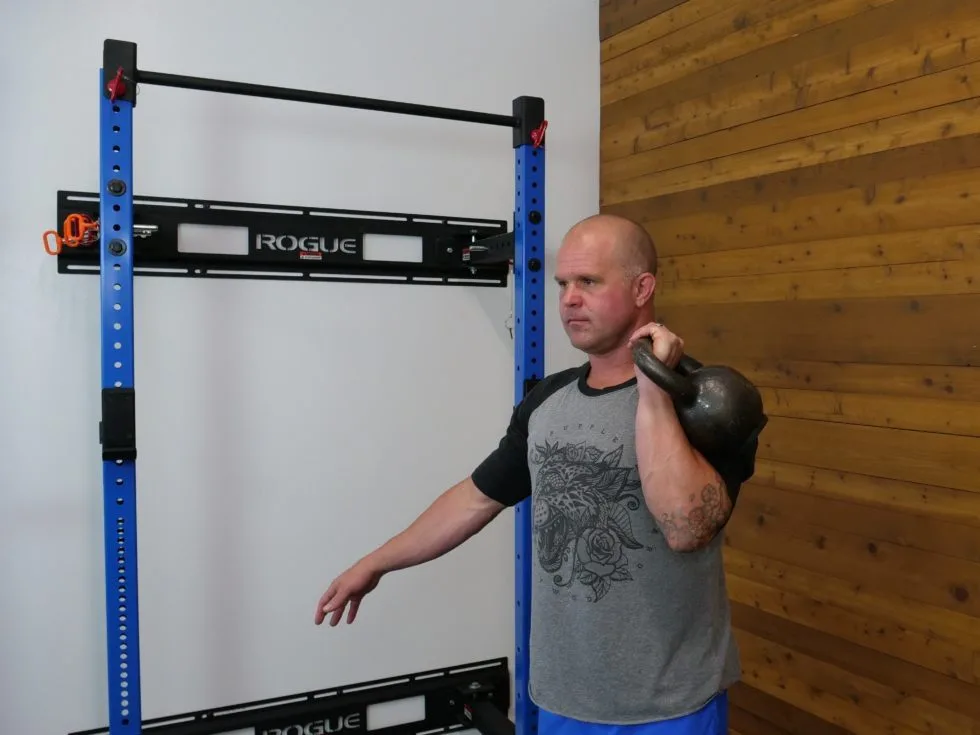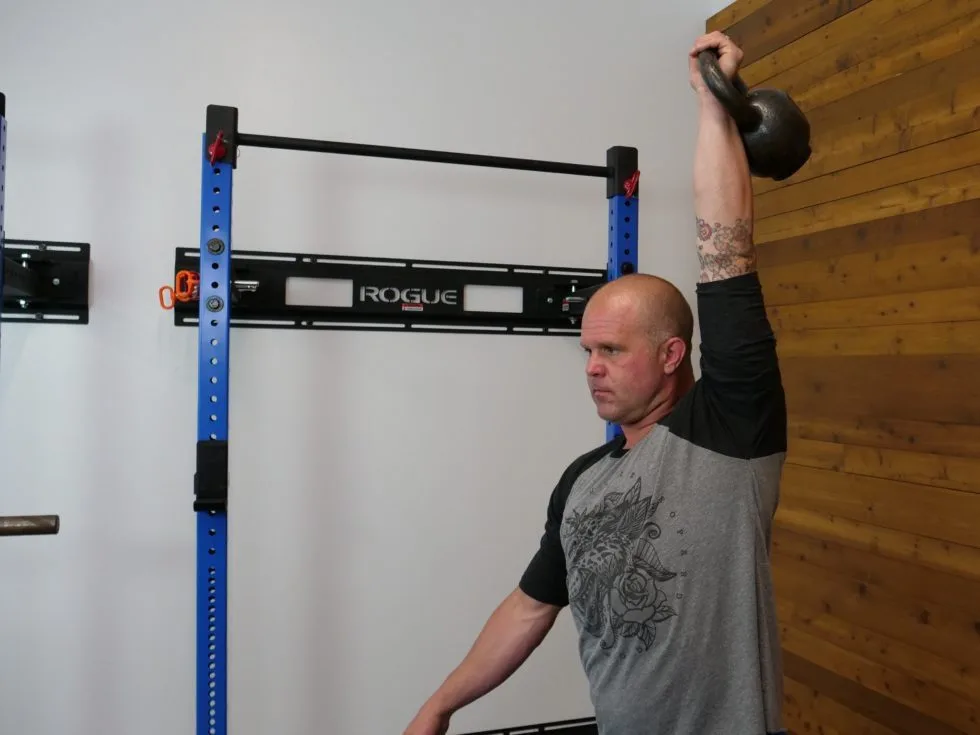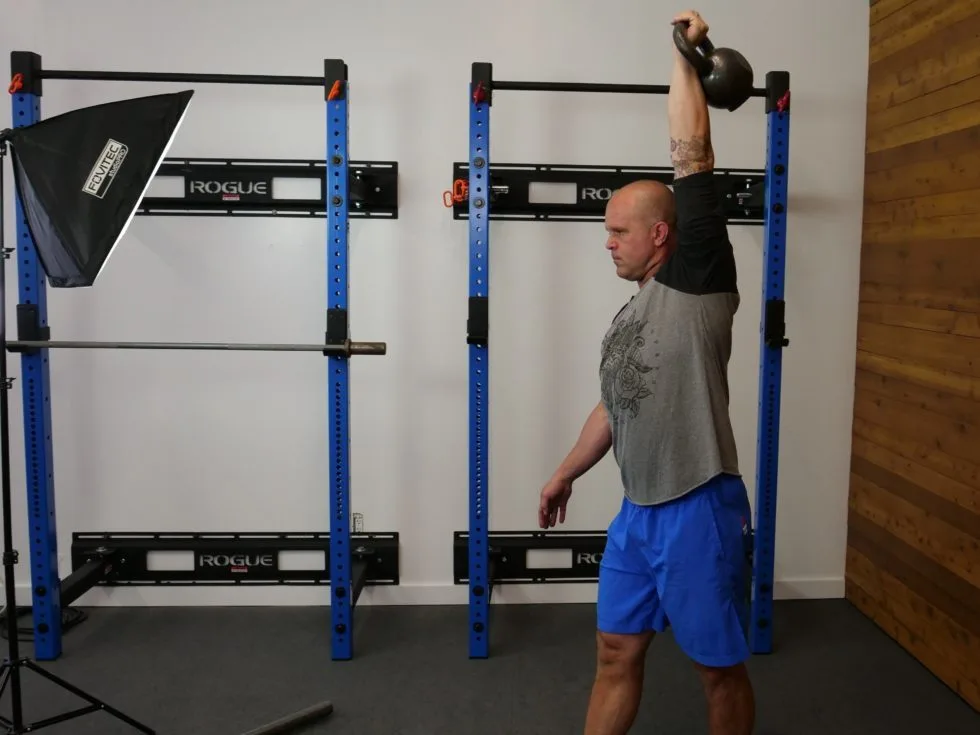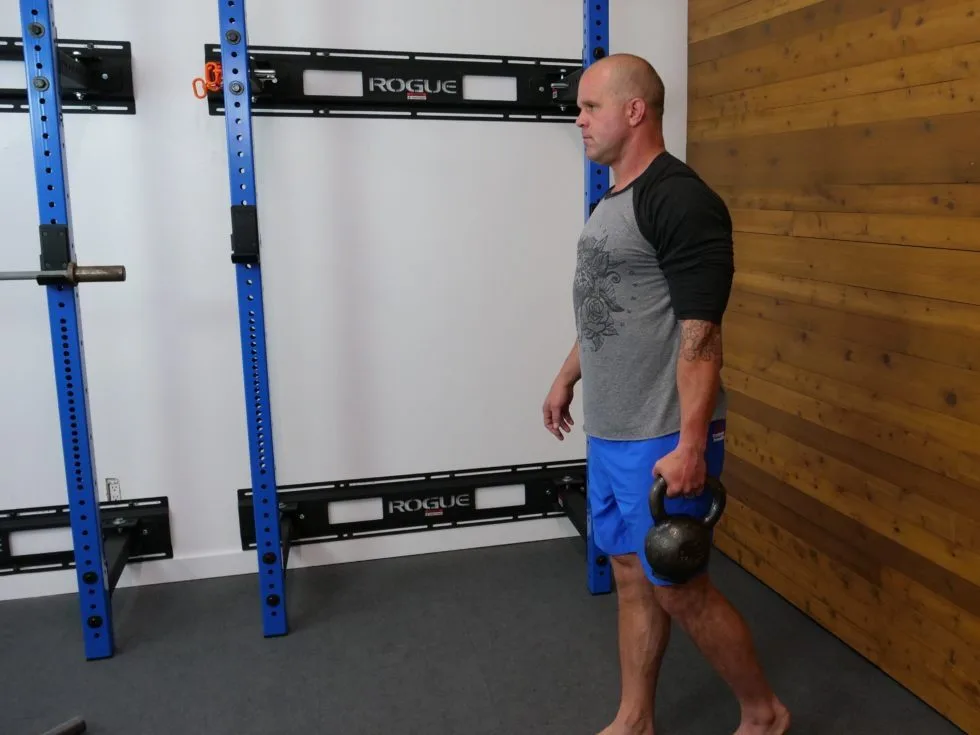3 Killer Kettlebell Mobility Exercises for Your Shoulders
Let’s face it: sometimes your shoulders feel rickety even on good days. But overhead mobility and good upper body articulation is so important for everyday life — it pays major dividends to dedicate some time to working on your shoulder strength through all ranges of motion.
We love to see healthy, pain-free shoulder joints here at TH. Check out this blog for three kettlebell shoulder exercises to work into your next training session.
Time to Work on That Sticky Shoulder Mobility
Low back pain might be the most prevalent injury among those who train, but shoulder issues are arguably a close second.
Whether it’s an impingement that limits range of motion, hypermobility that makes dislocation more likely, or the dreaded rotator cuff tear that keeps orthopedic surgeons busy to the tune of 250,000 repair procedures each year, shoulder problems are pervasive.
This means that regular shoulder mobility work is a must. But sometimes people are coming at the problem with the goal of removing restrictions and adding greater range, when in fact what’s lacking is stability and strength.
Even when people realize this, their attempted solutions fall short.
Endless variations of “rotator cuff exercises” – see five kinds of shoulder flys, endless scarecrows, and three-pound Granny weights – are the go-to, and yet often produce little more than local soreness.
While a few of these movements have a place you have to understand that there are other “big rock” exercises that do much more to stabilize and strengthen the muscles and other tissues of the shoulder and scapula area.
Three Shoulder-Focused Kettlebell Exercises
Here are three kettlebell exercises focused on shoulders to add to your training repertoire.
1. Single Arm KB Shoulder Press
OK, you could derive a lot of benefits from shoulder pressing a barbell with both hands.
But only using one arm adds an additional stability component and will help you avoid “cheating” with your stronger side while hiding the deficiency of the weaker one.
Making the shoulder press unilateral will also ask more of the inactive side, as it has to counterbalance the force you’re generating with the active arm.
- Stand with your feet shoulder width apart.
- Pick up a kettlebell in one hand and hold it to your collarbone, with your palm facing your chest.
- Bracing your abs and squeezing your glutes, straighten your arm to press the kettlebell overhead.
- Lower the weight down under control, and use the stretch reflex to initiate the next rep.
- Complete the desired number of reps, then switch sides.
Form tip: Keep your active wrist straight, and create stabilizing tension by balling the hand of the non-active arm into a fist. Try to keep the path of the kettlebell straight up and down.


2. Overhead Carry to Suitcase Carry
Like the single-arm kettlebell press, you could use a dumbbell for both of these carry variations and/or a short bar for the suitcase one.
However the compact design of the kettlebell and concentration of mass in a smaller area makes it easier to obtain and preserve the proper alignment, particularly with the overhead component in which your shoulder is most vulnerable.
- Repeat the first three steps of the single-arm kettlebell press.
- Walk down your driveway, across your garage (check overhead clearance first!), or between two cones.
- Keep going until you start to feel slight fatigue in your arm, shoulder, or thoracic spine, then slowly lower the weight until it’s down by your side.
- Continue walking until you again fatigue a little, then switch arms and start over in the overhead position, before transitioning to the suitcase carry.
Form tip: When the weight is overhead, imagine a straight line running through your hip, wrist, elbow and shoulder. Start with a lighter weight that you think you can handle. When transitioning to the suitcase carry, put the weight further back than you might initially, so your active hand is between your side and back pockets.


3. Turkish Get-Up
Of all the exercises you can do to sort out your dodgy shoulders, the get-up arguably reigns supreme. Why?
Because it requires both a horizontal (when you’re lying on the floor) and overhead press position and tests the integrity of your shoulder complex while static and in motion. Plus, unlike many movements, the get-up involves controlling the path of a kettlebell across the transverse plane, which is why folks like the Titleist Performance Institute (TPI) prescribe it for golfers.
Not to mention that the off-arm has to provide stabilization through the shoulder as you maneuver your body from lying, to a lunge, to a standing position, and then back down. As the get-up is a highly technical exercise, you can follow the directions below and check out the video, but you’ll be best off seeking a coach to make sure you’re getting the finer points down.
- Lie on your back with your left leg straight and left knee bent, with your right leg flat on the floor. Then position a kettlebell next to your left shoulder and grip the handle with your left hand.
- While still gripping the kettlebell with your left hand, use your right hand to help move it toward the center of your body and then extend your left elbow.
- As soon as your arm is locked out, allow your left shoulder to move to the back of the socket. Your left hand and elbow should be in a straight line over your left shoulder. Try to maintain this alignment throughout the rest of the exercise.
- Roll onto your right elbow, keeping your gaze fixed on the kettlebell.
- With your right arm staying straight, push off the ground with your right leg and extend your right elbow with the right palm flat on the ground and positioned in a straight line down from the other arm, which is still gripping the kettlebell overhead.
- Squeeze your butt muscles and drive off the ground with your right foot as you extend your hips toward the ceiling.
- Use your right arm and leg to support you as you pull your left leg under your hips. Then place your right knee underneath your torso, making sure that you keep looking up at the kettlebell.
- Move your bodyweight toward your right side and get your torso upright. As soon as your right hand comes off the ground, pull your shoulder back and turn your arm outward. You should be in a lunge position.
- Use your left leg to push yourself up out of the bottom position of the lunge with your torso remaining upright and weight centered over your hips.
- Bring your right foot forward so it meets the left, and stand up with your feet facing forward and shoulder width apart. Your left arm should be fully extended overhead and your right arm straight out in front of you.
- Reverse the pattern to return to the floor.
Form tip: Don’t ever do an AMRAP-style workout with get-ups, but rather focus on quality and take your time between reps. In some sessions, reduce the weight (again, this should be lighter than you think you can lift to begin with until you nail the correct technique) and pick one segment of the get-up to pause at during each rep (e.g. the lunge with arm overhead, or rolling onto the elbow).
Find Your Perfect Training Plan
Sometimes all you need to reach your destination on your fitness journey is an expert guide. Look no further, we've got you covered. Browse from thousands of programs for any goal and every type of athlete.
Try any programming subscription FREE for 7 days!
Related Articles
You May Also Like...
Intermittent Fasting for Shift-Working Athletes
Shift work can make fueling for performance feel like a constant battle. Between erratic schedules, disrupted sleep, and unpredictable training windows, sticking to a nutrition plan can be tough. Intermittent fasting (IF) offers a flexible approach that may already...
The Ultimate Low Back Training Guide: Tips for a Stronger Spine
Low back pain sidelines countless athletes and gym-goers. But here’s the truth: your lower back doesn’t need endless isolation work to stay strong. The real secret? A smart mix of direct and indirect training strategies. This guide breaks it all down, giving you...
Hammer Curls: Form & Variations for Bigger Biceps
Want thick, juicy biceps that pop out of your T-shirt? Then you should probably be doing more hammer curls. This curl variation shoots a powerful pump through your biceps and forearms that lead to big gains in a different way than traditional bicep curls.Written...
Intermittent Fasting for Shift-Working Athletes
Shift work can make fueling for performance feel like a constant battle. Between erratic schedules, disrupted sleep, and unpredictable training windows, sticking to a nutrition plan can be tough. Intermittent fasting (IF) offers a flexible approach that may already...
The Ultimate Low Back Training Guide: Tips for a Stronger Spine
Low back pain sidelines countless athletes and gym-goers. But here’s the truth: your lower back doesn’t need endless isolation work to stay strong. The real secret? A smart mix of direct and indirect training strategies. This guide breaks it all down, giving you...

Want more training content?
Subscribe
For Coaches
For Athletes
About
Support
Training Lab
Access the latest articles, reviews, and case studies from the top strength and conditioning minds in the TH Training Lab!
Made with love, sweat, protein isolate and hard work in Denver, CO
© 2024 TrainHeroic, Inc. All rights reserved.





